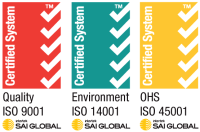What is a Raised Floor Foundation? Guide for Homeowners & Builders
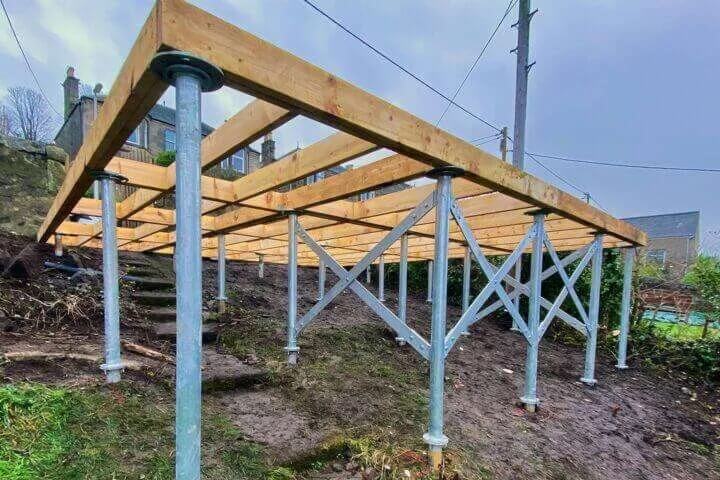
Raised floor foundations lift the structure above ground using piers, posts, or screw piles. They’re ideal for sloped sites, flood zones, and reactive soils, offering better access, drainage, and long-term durability.
A strong foundation is at the heart of any well-built home. However, not all foundations are created equal, and for sloped sites, flood-prone zones or reactive clay conditions, a standard concrete slab might not be the best option.
This guide breaks down everything homeowners and builders need to know about raised floor foundations, including when to use them, how they’re constructed, and how they compare to slab foundations. We’ll also explain how screw pile systems offer a reliable, low-disruption alternative to traditional footings.
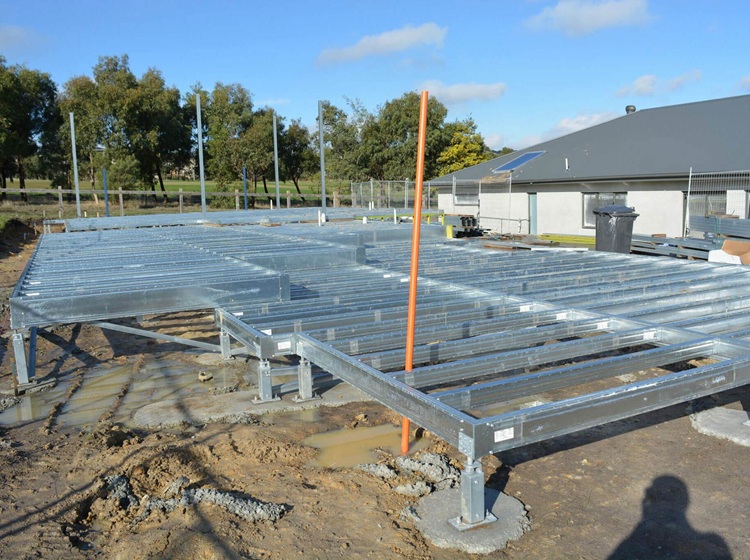
What is a Raised Floor Foundation?
A raised floor foundation (also known as a raised foundation or elevated floor system) lifts the structure above ground level. This is typically achieved using piers, posts, stumps, or screw piles, with a suspended floor system sitting above.
The main goal of a raised floor system is to create a ventilated subfloor space that protects the building from ground moisture and soil movement. These systems are commonly used for residential homes in challenging terrain but also popular in modular and remote construction.
Raised floors are common in:
- Sloped or uneven terrain
- High rainfall or flood-prone zones
- Older homes undergoing extensions or subfloor access upgrades
- Regions where airflow beneath the house is required for ventilation or termite prevention
Raised Foundation Types
There are several raised foundation types used in Australian residential and commercial construction:
- Pier and beam systems – Concrete or masonry piers support timber or steel floor joists.
- Stump foundations – Vertical timber or steel stumps placed into concrete footings.
- Screw pile foundations – Steel piles with helical blades that screw into the ground without excavation.
- Raised slab foundations – A suspended slab supported by perimeter walls or columns.
- Raised pier foundations – Similar to pier and beam, but often use more advanced footings like screw piers for better load transfer.
Each type suits different site and soil conditions. For example, raised slab foundations work well on steep slopes, while raised pier foundations are common in older Queenslanders and flood-prone zones.
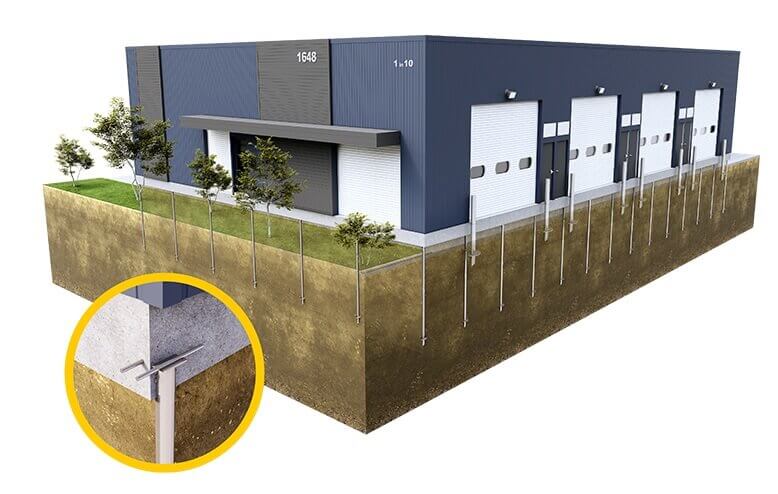
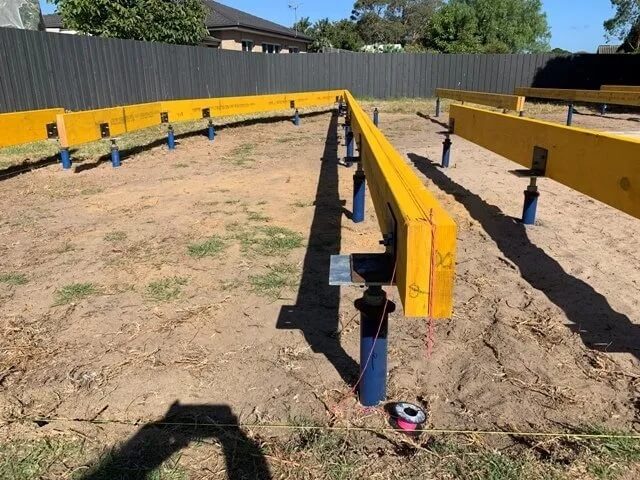
When and Where Raised Floor Systems are Used
Raised floor construction offers a practical alternative where slab-on-ground isn’t feasible. Common scenarios include:
- Sloping sites – Cheaper and easier than cutting and filling to level ground
- Poor drainage or flooding risk – Elevating the home prevents water damage
- Reactive or unstable soils – Allows for flexible footing design and movement tolerance
- Access requirements – Raised floors allow easy access to plumbing, services or underfloor insulation
- Coastal areas – Salt and moisture exposure is reduced by lifting the structure
- Bushfire zones – Easier to design for BAL ratings and maintain compliance
Under these conditions, a raised house foundation often offers better durability and lower long-term maintenance costs than slab-based alternatives. It also allows builders to adapt to varying soil conditions on the same block.
Raised Foundations vs Slab Foundations Homes
Here’s how the two compare:| Feature | Raised Floor Foundation | Slab Foundation |
| Site Suitability | Sloped, uneven, reactive or flood-prone land | Flat, stable sites with good drainage |
| Construction Time | Slightly longer, depending on the footing system | Often faster if conditions are ideal |
| Cost | Generally higher upfront, more adaptable | Lower upfront on flat land |
| Moisture Control | Excellent drainage under the home | Can be prone to moisture issues if not sealed |
| Access for Repairs | Easy underfloor access for plumbing, wiring | Slab concealment makes repairs harder |
| Energy Efficiency | May need more insulation for thermal control | Good thermal mass, less airflow below |
| Pest/Termite Management | Easier inspections under the house | Must rely on perimeter treatments |
| Aesthetic | Suits traditional and elevated designs | Preferred for modern, single-level homes |
Raised Floor Foundation Details: Components and Materials
- Vertical supports (piers, stumps, or screw piles)
- Bearers and joists (timber or steel framing)
- Subfloor insulation and/or ventilation
- Termite protection systems
- Flooring structure above the frame
The exact configuration depends on the raised floor construction method, soil type, and building size. Screw piles are often used as a substitute for concrete piers, especially in areas with poor access or unstable ground.
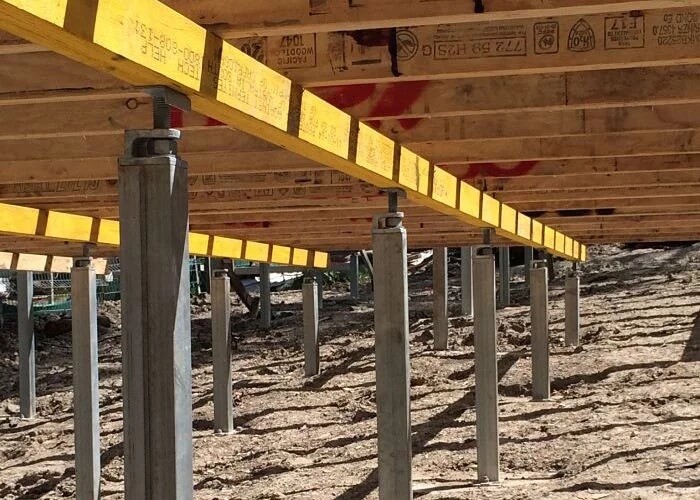
How Screw Pile Foundations Support Raised Floors
Screw piles are a modern solution for raised floor systems. Unlike traditional concrete piers, screw piles:
- Require no excavation or curing
- Can be installed in wet, soft, reactive or inconsistent soils
- Allow immediate loading, ideal for fast-paced builds
- Are ideal for sloping or tight-access sites
Blade Pile’s engineered screw piles are purpose-built for Australian conditions. They come with optional slip-joint caps to allow for controlled movement in reactive soils, supporting long-term stability. For raised floor foundation systems, this means a quicker install, less site disruption, and foundations that adapt to the environment.
Our types of screw piles are also removable and recyclable, making them ideal for modular buildings or future redevelopment sites.
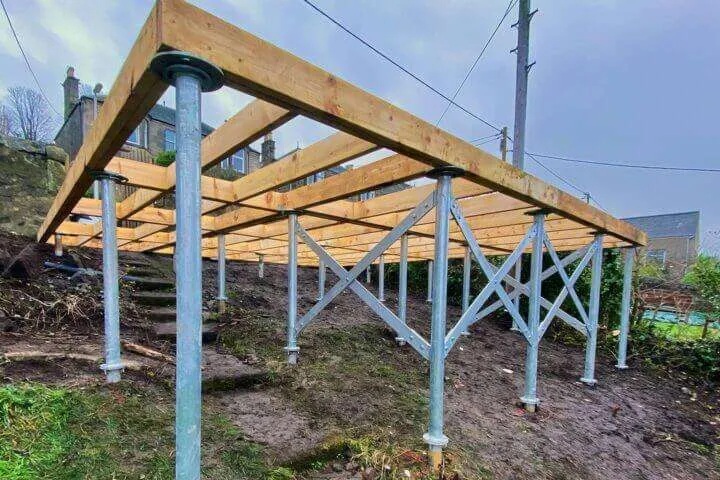
Maintenance Benefits
Maintenance for homes with raised floor systems is typically lower when moisture and airflow are managed correctly. Termite inspections, subfloor ventilation, and regular visual checks help keep things in good shape.
Raised floor systems also make it easier to install or upgrade underfloor insulation, hydronic heating, or plumbing without removing flooring.
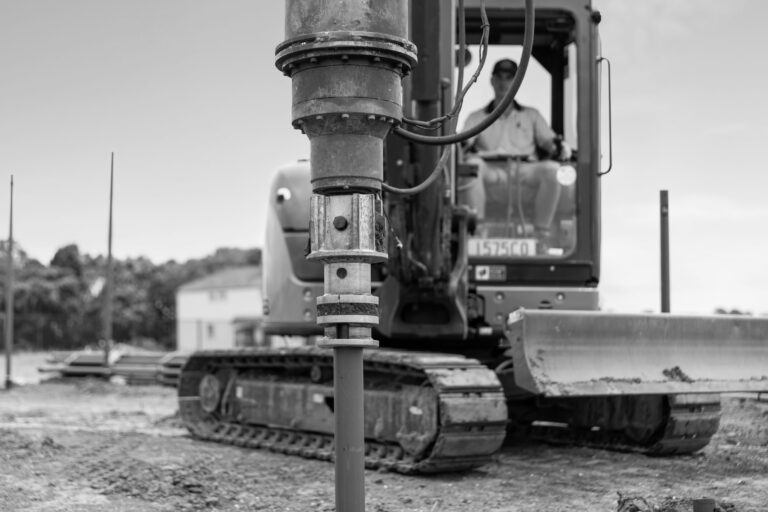
Regulatory & Environmental Considerations
Raised floor systems must comply with the National Construction Code (NCC) and relevant Australian Standards. Site classification, wind loads, and termite zones all affect design choices.
In bushfire-prone areas, elevation can assist in compliance with BAL ratings by creating separation from combustible ground materials.
Environmentally, raised slab foundations and screw piles avoid the heavy concrete use of slab homes. Screw pile installations generate less waste, less soil disruption, and are fully removable at end-of-life.
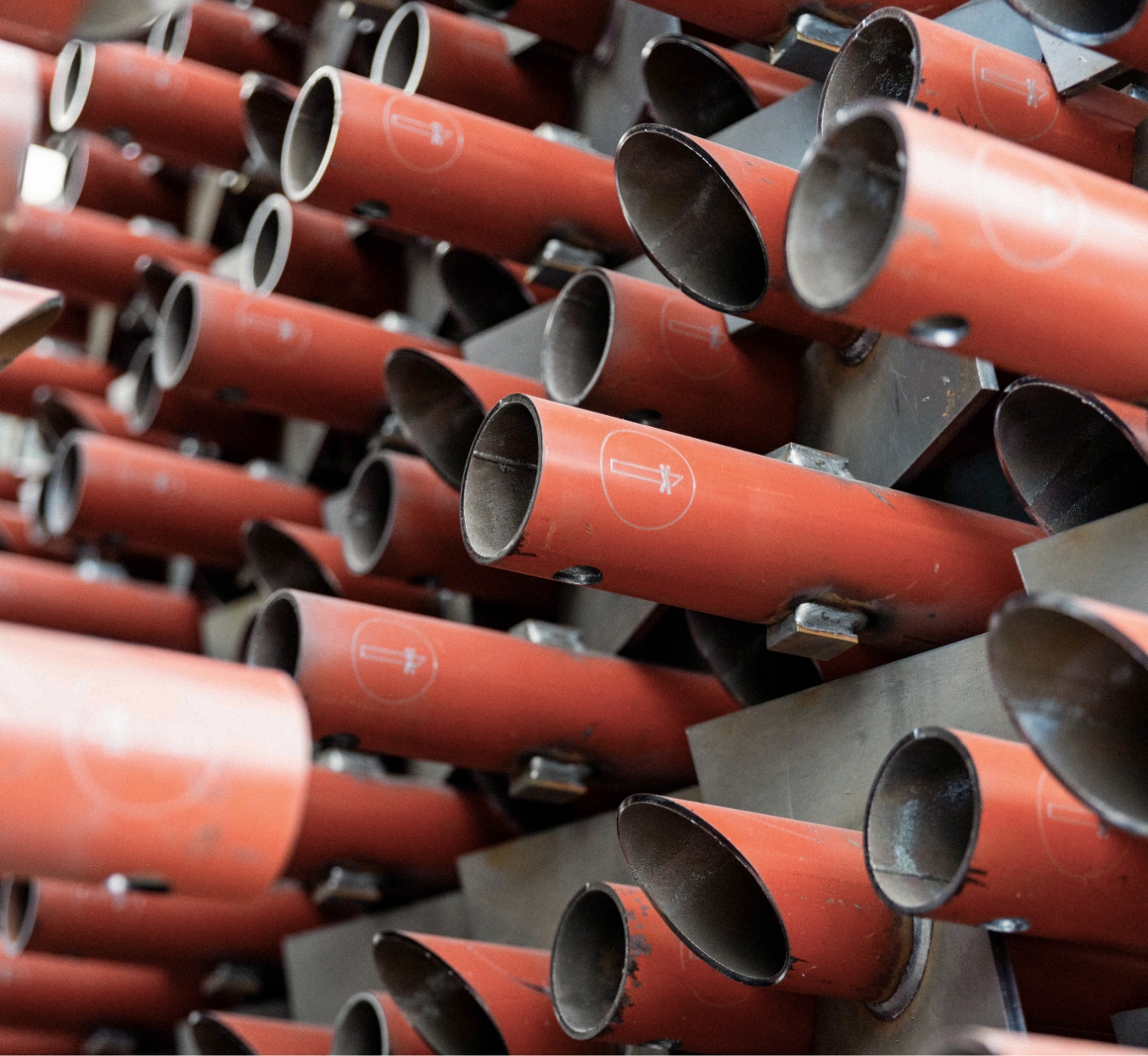
Choosing the Right Foundation for Your Site
Raised floor foundation systems offer flexibility, access, and better performance on challenging sites. If your land is uneven, wet, or prone to soil movement, this foundation method could save you time, stress, and repair bills over the life of your home.
Blade Pile is the leading screw pile supplier in Brisbane, with a range designed to support raised floor construction across a wide range of Australian environments.
From Brisbane to Melbourne, the Gold Coast and beyond, we work with builders to deliver strong, fast, and compliant footings that support smarter builds. Get in touch to discuss your project today.
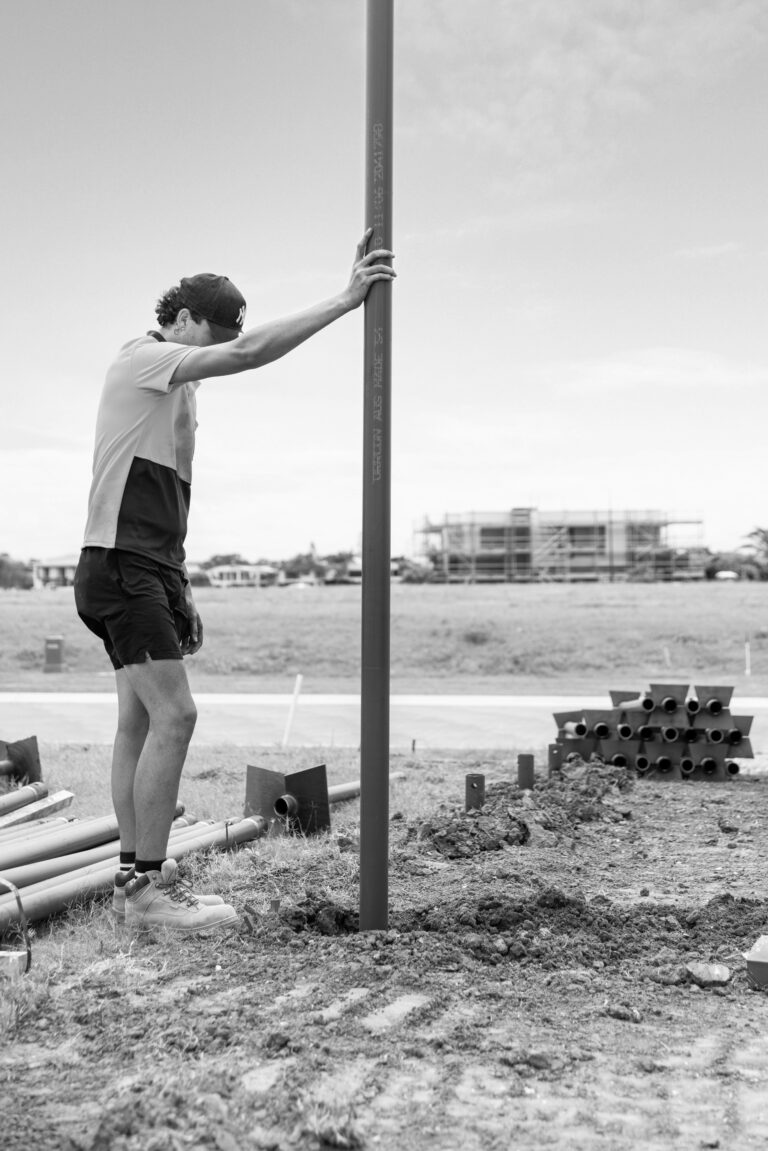
Frequently Asked Questions
Yes. A raised foundation keeps the home elevated above ground moisture, making it more effective at managing water ingress. This helps prevent rot, mould, and long-term structural issues in flood-prone zones, particularly when combined with proper drainage and ventilation under the house.
The height depends on site conditions, drainage requirements, and local building codes. Most raised floor systems sit between 400mm and 1.2m off the ground. In flood-prone or high-moisture areas, higher elevations are often required to meet safety and compliance standards.
Raised floor systems can be more expensive upfront due to extra materials and labour. However, they often save money long-term by reducing excavation needs, improving drainage, simplifying repairs, and lowering the risk of flood and termite damage in challenging environments.
Yes. Screw piles are excellent for sloped or uneven sites, as they can be adjusted to varying depths without needing major excavation. Their flexibility helps maintain a level platform for raised floor construction and supports stable, low-impact building on rugged terrain.
The subfloor space under a raised floor system definitely allows air to circulate freely, which helps keep moisture levels down. This ventilation can assist with natural cooling in warmer months and supports better air quality, reducing the risk of condensation or mould.
Screw pile systems with engineered slip-joint heads are ideal for reactive clay soils. They’re designed to accommodate ground movement, expansion, and contraction without affecting the structure’s integrity, making them a reliable option in areas with problematic soil types.
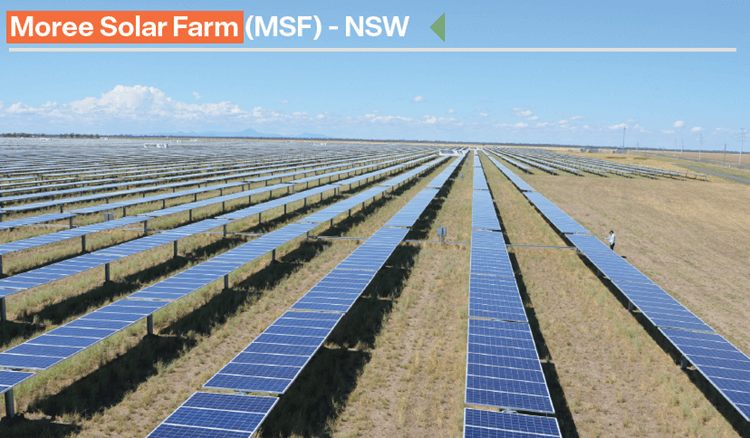
32,000 Solar Blade Piles supplied and installed
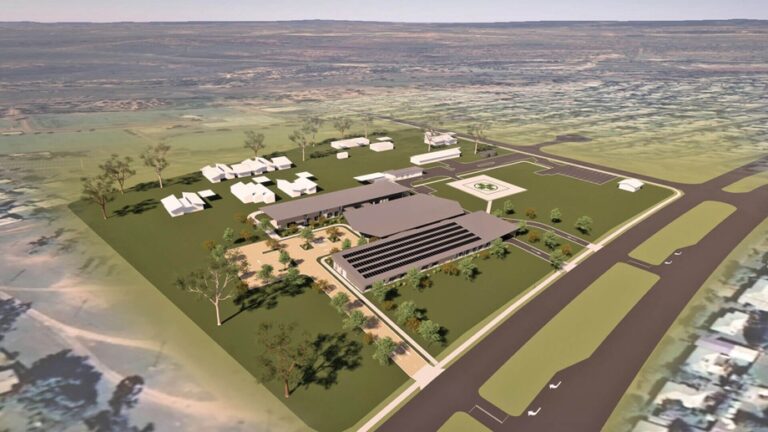
Over 500+ galvanised screw piles
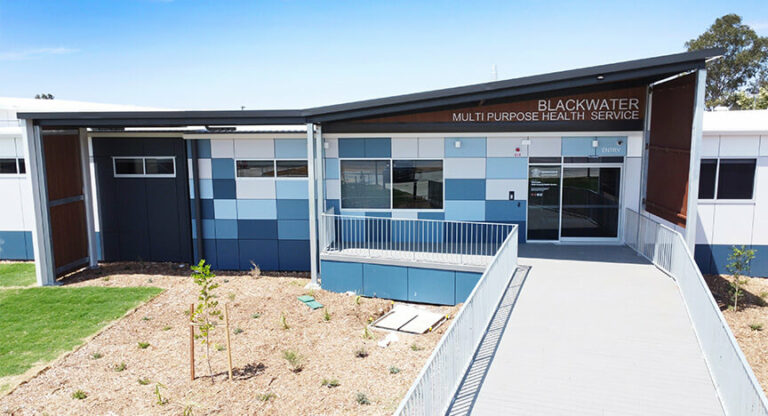
Over 275+ galvanised screw piles
Contact
Blade Pile
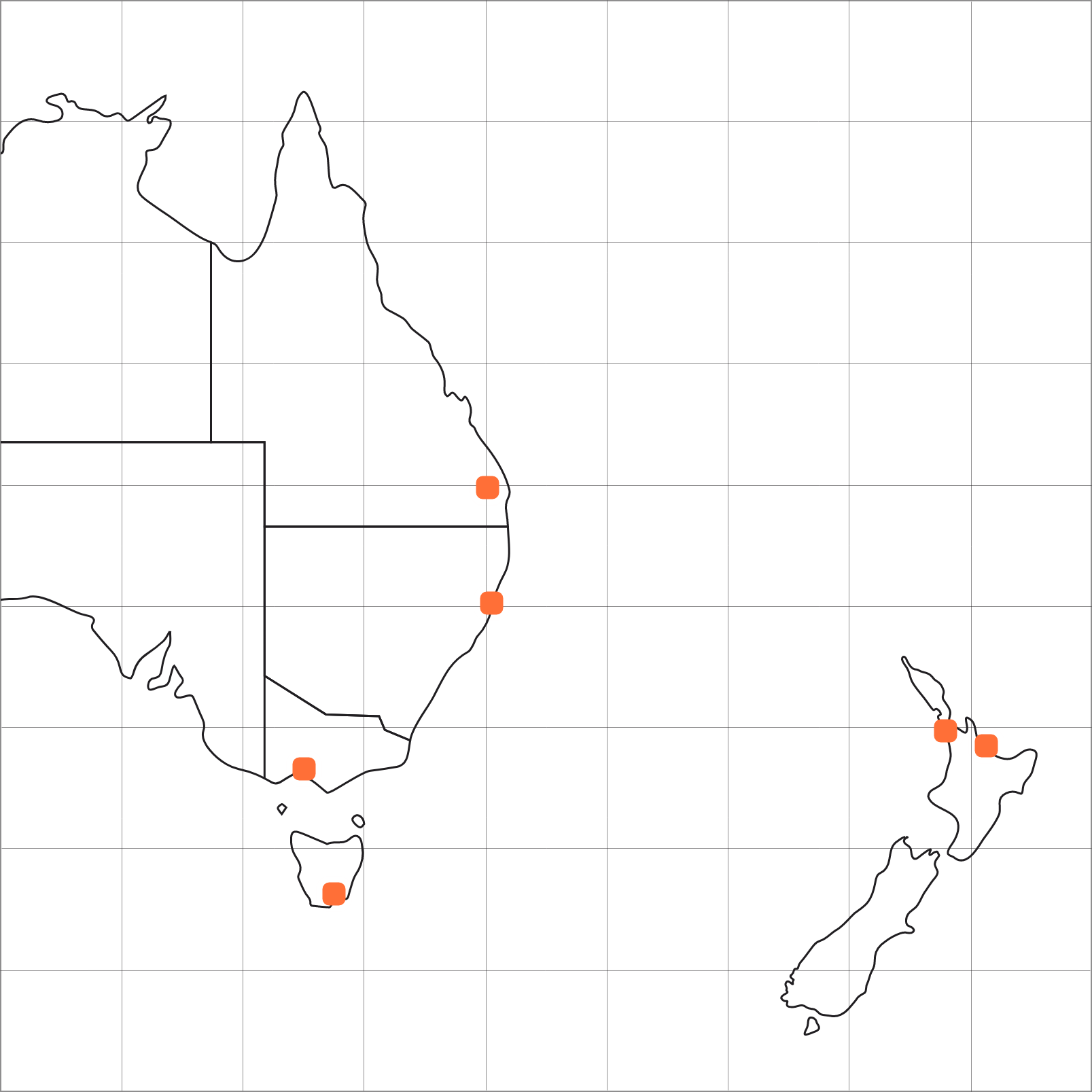
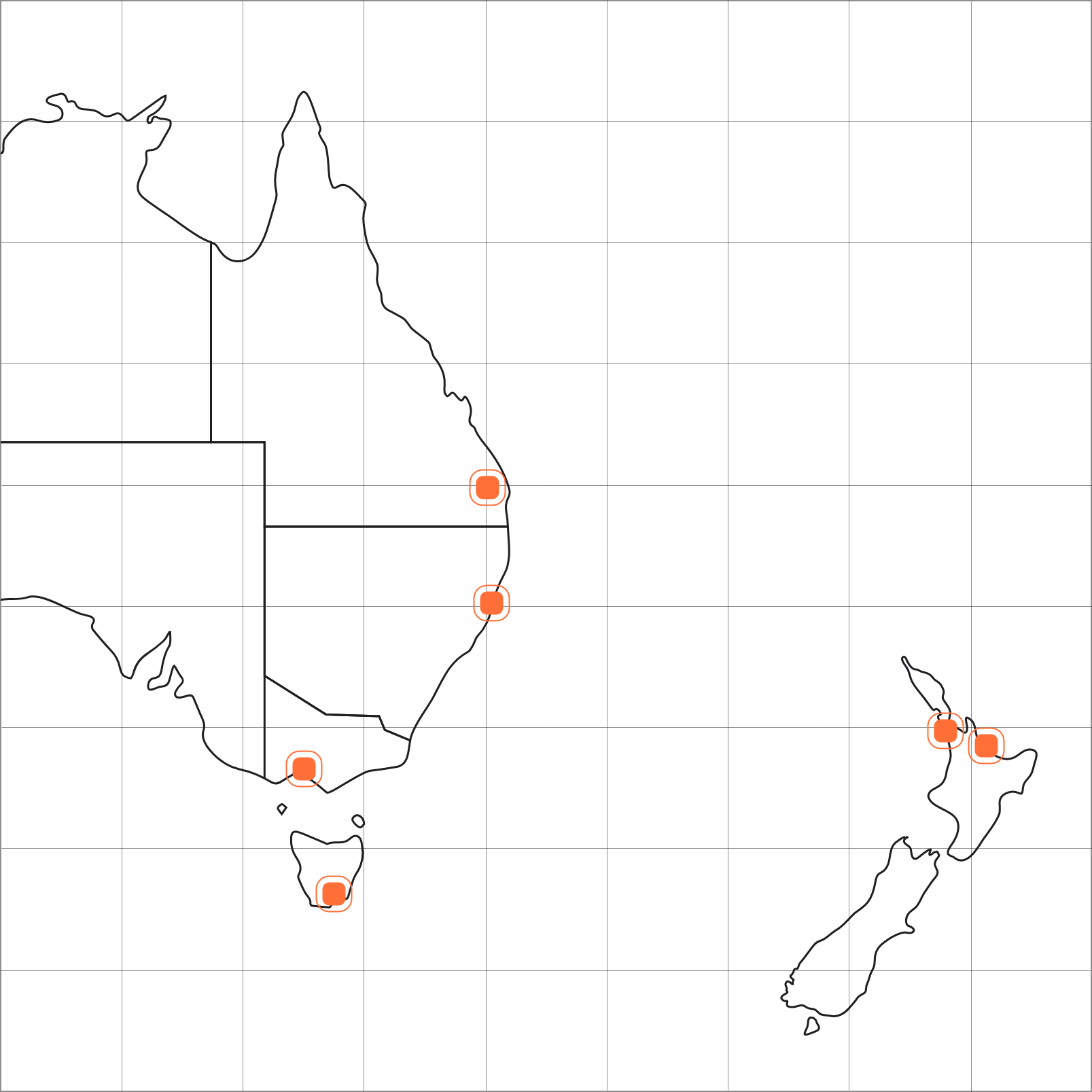
NSW Master Distributor – Solid Metal Piling
41 Topham Road, Smeaton Grange NSW 2567
TAS Master Distributor – Channel Earthmoving
Contact Us !

In his capacity as National Manager, Josh spearheads Blade Pile Group’s business development and growth into new markets.
Since joining the organisation in 2018, Josh has brought a diverse knowledge base and bank of experience in construction, business management, logistics and team leadership to the Blade Pile Group.
